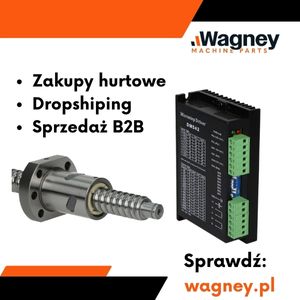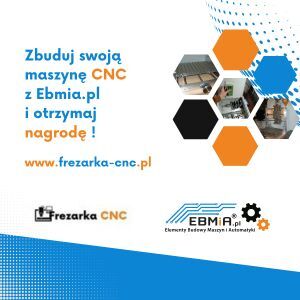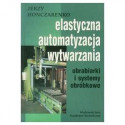Na pewno powłoki są ok. do czegoś takiego a szczególnie nowości których mało w Polsce : News Machining 60 HRC or harder materials with HSN2
Machining 60 HRC or harder materials
Meeting the challenge of “hard cases”
Extremely tough, hardened hot-working steels are commonly used nowadays to make injection molds and forming dies. The tools used to produce them must therefore be robust enough to stand up to extremely hard materials rated up to 70 HRC. The supernitride material HSN² is ideally equipped to meet this challenge, and it helps extend tool life.
Materials used in molds and dies making are often both hard and tough, and the alloy elements that increase their corrosion resistance also make them more difficult to machine. This means that the tool coating must deliver more than the usual coating can offer.
Inka Harrand, Product Manager : “Machining materials with hardness ratings of 60 HRC or more is a job for specialists. This also applies to the tools and their coatings, which must be able to meet very severe requirements and handle very high loads. Our silicon-doped coating material HSN² is specifically targeted at applications of this sort and forms the ideal basis for specially designed coatings for machining extremely hard materials. Silicon forms very fine crystallites, thereby creating smooth surfaces and a compact crystal structure. We developed HSN² for these cases, and we have already used it in numerous customer projects with good results.”
Pursuing higher performance
HSN² is a latest-generation supernitride produced by using the sputtering technology which gives users full freedom of choice for the chemical elements used in their coatings. The specific elements that are crucial for achieving optimal coating performance for machining hard materials can be vaporized in the plasma. Special targets (the base material) ensure reproducible quality from the first to the final batch. “What’s more, the coating method makes HSN² especially smooth because droplets cannot form on the coating with the sputtering method. This results in optimal chip and heat removal,” according to Inka Harrand.
Modern tools for molds and dies making are designed for highest precision to enable process security for machining within very tight manufacturing tolerances. This applies equally well to larger-dimensional face mills with indexable inserts for bulk material removal on flat surfaces as well as solid carbide round tools for vertical work. Thanks to the smooth coatings, both types can also be used for finishing because they can produce mirror-like surfaces in a single machining operation. This could eliminate the need for polishing.
HSN² is available in various coating thicknesses from 1.0 μm to 4.0 μm to meet specific customer needs. This is very important because cutting tools differ not only in diameter, but also very much in geometry.
Depending on the manufacturer, radius or ballnose end-mills with diameters down to 0.1 mm are available as standard. Premium quality, extending from the substrate to precisely ground geometry, is essential for achieving long life times and process security, especially with such small tools. This is where CemeCon comes into play: in cooperation with the customer we design the coating and specify a suitable working plan.
Tackling hardness even harder
Tool precision and tool quality depend on a high geometry accuracy. Inka Harrand: “The coating can’t be allowed to change this. People who design such high-precision tools expect the desired properties to be retained in the coated tools. The coating requirements we fulfill with HSN² are extreme hardness, mechanical load capacity, outstanding coating adhesion and high toughness. Our coatings can be deposited with high homogeneity and reproducibility, even on complex geometries, to enable a long tool life and maximum process security. As PVD coatings are a ‘visible line’ process, the coating process must be optimally matched to the tools. For this reason, decided many years ago to focus on cutting tools, and specifically on precision tools.”
HSN² compared to TiAlN (tool life in %)
Material: 1.2379
X155CrVMoV 12 1
62 HRC
Machining: milling, dry
Parameter: vc = 250 m/min
f = 0,25 mm/U
A coating structure based on TiAlN supernitride increases tool life by 65% compared
to uncoated tools, and HSN2 boosts this to 100%.
Znaleziono 2 wyniki
Wróć do „obróbka hartowanej stali 65HRC”
- 06 wrz 2012, 21:31
- Forum: Obróbka metali
- Temat: obróbka hartowanej stali 65HRC
- Odpowiedzi: 21
- Odsłony: 5052
- 05 wrz 2012, 21:02
- Forum: Obróbka metali
- Temat: obróbka hartowanej stali 65HRC
- Odpowiedzi: 21
- Odsłony: 5052
--------------------------------------------------------------------------------
ledeburyt napisał/a:
Żadna inna obróbka nie wchodzi w grę..jest to płaszczyzna zawierająca promienie, oprócz tego jestem gotowy do działania i mam pewne poparcie doświadczonych technologów, że mogę tak to wykonać....
Czasami poczytaj co doświadczony operator pisze.....
...... mam takiego na stanie - przy obróbce WCL i NC ( hartowanej ) jak znalazł.
http://www.hoffmann-group...alog/index.html
str. 348 artykuł 21 2105 (płytki - strona dalej).
Mariusz.
-----------------------------------------------------------------------------------------------
Nie proponowałbym Hoffmana no ale głowicę z płytkami okrągłymi lub też płytkami APFTlub zgrupy A... na pewno . Tymbardziej najbardziej typowe 16 mm które produkują wszyscy producenci .
Hoffman tylko produkuje trzpieniówkę węglikową i nie wszystko ma dobre . Wiem bo znam jego dostawców .
ale jak najbardziej składak do pierwszego "tłoczenia " tj...frezowania jest najlepszą ideą .
Nie siedzę już w skrawających od 6 lat .......dlatego nie chce czegoś/kogoś polecić .
Przy monolitach trzeba mieć na pewno frez z kątami i geometrią pod tą twardość ...... i naczej to głupota i drogi interes .
ledeburyt napisał/a:
Żadna inna obróbka nie wchodzi w grę..jest to płaszczyzna zawierająca promienie, oprócz tego jestem gotowy do działania i mam pewne poparcie doświadczonych technologów, że mogę tak to wykonać....
Czasami poczytaj co doświadczony operator pisze.....
...... mam takiego na stanie - przy obróbce WCL i NC ( hartowanej ) jak znalazł.
http://www.hoffmann-group...alog/index.html
str. 348 artykuł 21 2105 (płytki - strona dalej).
Mariusz.
-----------------------------------------------------------------------------------------------
Nie proponowałbym Hoffmana no ale głowicę z płytkami okrągłymi lub też płytkami APFTlub zgrupy A... na pewno . Tymbardziej najbardziej typowe 16 mm które produkują wszyscy producenci .
Hoffman tylko produkuje trzpieniówkę węglikową i nie wszystko ma dobre . Wiem bo znam jego dostawców .
ale jak najbardziej składak do pierwszego "tłoczenia " tj...frezowania jest najlepszą ideą .
Nie siedzę już w skrawających od 6 lat .......dlatego nie chce czegoś/kogoś polecić .
Przy monolitach trzeba mieć na pewno frez z kątami i geometrią pod tą twardość ...... i naczej to głupota i drogi interes .











